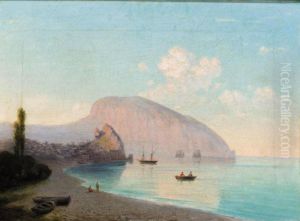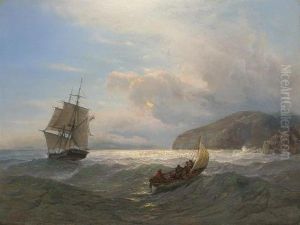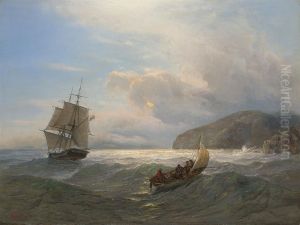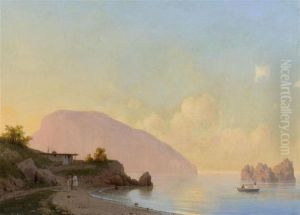Adolf Iwanowitsch Fessler Paintings
Adolf Iwanowitsch Fessler, born on July 17, 1783, in Königsberg, Prussia (now Kaliningrad, Russia), was a 19th-century German-Russian painter known for his historical scenes and portraits. He was a part of the Romantic movement, which emphasized emotion and individualism as well as glorification of the past and nature.
Fessler showed an early aptitude for art and began his artistic education at the Königsberg Art Academy. His talent was evident, and he furthered his studies by traveling to Vienna in 1806, where he became a pupil of the famous Austrian painter Heinrich Friedrich Füger. Fessler's education under Füger honed his classical painting skills, which he later applied to his historical works.
After his studies, Fessler returned to Russia, where he became a significant figure in the Russian art scene. He was appointed a professor at the Imperial Academy of Arts in Saint Petersburg in 1824, a position he held until his death. During his tenure, he influenced a generation of Russian artists, emphasizing the importance of historical accuracy in art, which was a significant departure from the more free-form interpretations of earlier periods.
Fessler's historical paintings often depicted scenes from Russian history, with a focus on the grandeur and drama of Russia's past. His works were well-received, and he gained patronage from various members of the Russian nobility and even the imperial family. His portraits were also highly regarded for their detail and psychological depth, capturing the essence of his subjects with a remarkable realism for the time.
Despite his success, Fessler's life was not without challenges. He struggled with financial difficulties and personal losses throughout his career. Nonetheless, he continued to produce art that contributed to the cultural landscape of Russia and the wider Romantic movement. Adolf Iwanowitsch Fessler died on December 20, 1832, in Saint Petersburg. His work continues to be appreciated by art historians and enthusiasts for its contribution to the Romantic era and for its role in the development of Russian art.



